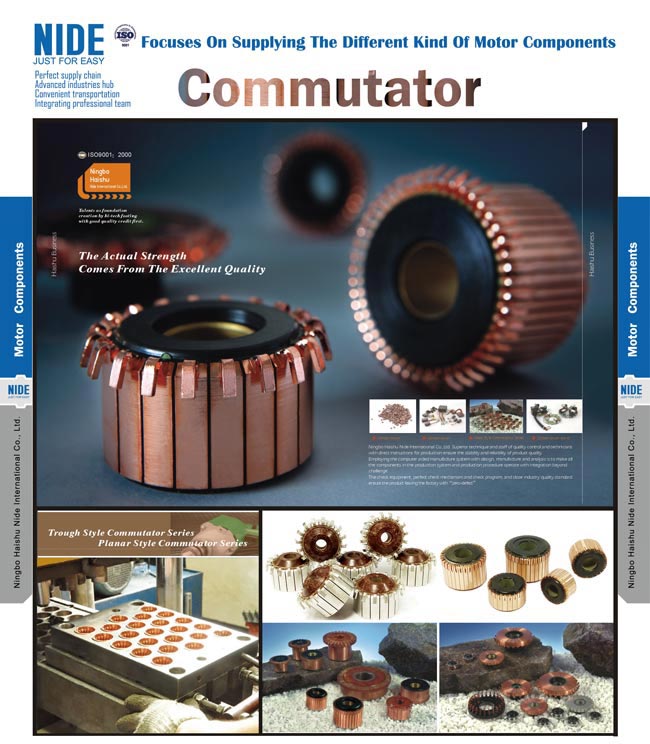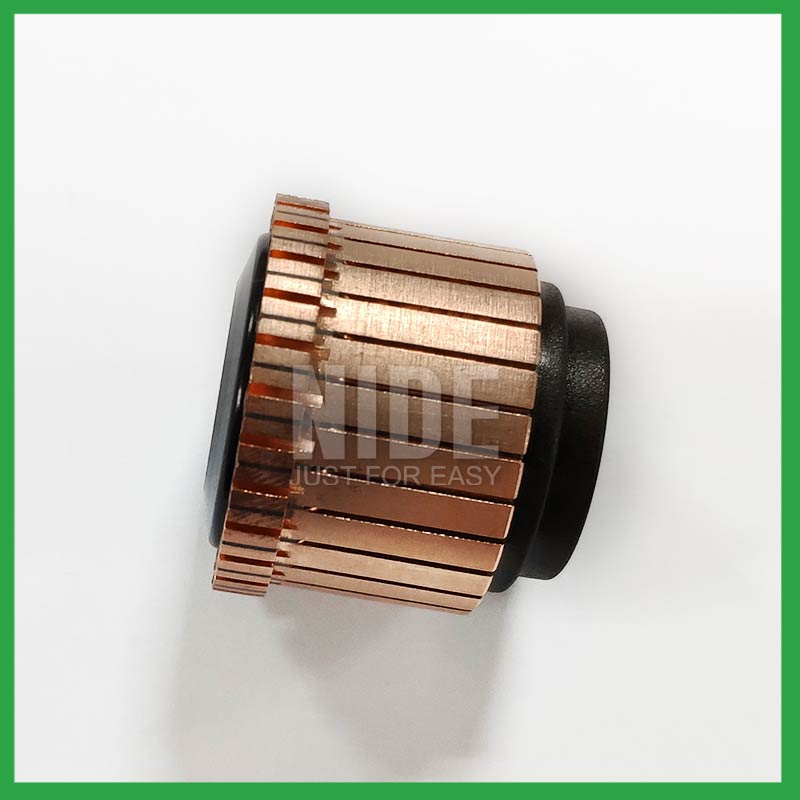2024-09-23
Direct current (DC) motors are widely used in various industries and applications, from household appliances to industrial machinery. One of the most critical components of a DC motor is the commutator, which plays a key role in ensuring efficient motor operation. Nide International, a leading provider of motor systems and components, specializes in delivering high-quality commutators that enhance motor performance. This article will explore the purpose and role of the commutator in DC motor systems, detailing its significance in ensuring smooth motor functionality.
A DC motor is a type of electric motor that converts direct electrical energy into mechanical energy through the interaction of magnetic fields. It operates by using a constant voltage source to produce motion. DC motors are commonly used in a wide range of applications, including electric vehicles, robotics, fans, and other automated systems, due to their controllability, efficiency, and simplicity.
The main components of a DC motor include:
Among these, the commutator plays a vital role in the proper functioning of DC motors.

A commutator is a rotary electrical switch in a DC motor that periodically reverses the direction of the current flowing through the rotor's windings. It consists of a cylindrical assembly of copper segments that are connected to the motor's armature windings. The commutator is typically located on the rotor, and brushes maintain contact with it as the rotor spins.
The primary purpose of the commutator is to ensure that the current flowing through the armature windings reverses direction at the appropriate time. This reversal is necessary to maintain continuous torque in the same direction, allowing the motor to spin smoothly and efficiently.
Without the commutator, the current in the armature would remain constant, causing the rotor to oscillate back and forth instead of rotating in one continuous direction. The commutator’s ability to reverse the current ensures that the motor produces a consistent rotational motion.
In a DC motor, the armature windings are situated in a magnetic field produced by the stator. As current flows through the windings, a force is exerted on the rotor according to the principles of electromagnetism. To ensure that the force continues to drive the rotor in a consistent direction, the commutator reverses the current every half turn of the rotor.
Nide International’s high-quality commutators ensure precise and timely current reversals, which is critical for achieving smooth and continuous rotation. This function is essential for motors used in applications such as electric vehicles, conveyor systems, and industrial machinery, where consistent torque is required.
Without the commutator, the motor would experience torque reversal after every half turn, causing the rotor to stop or even rotate backward. By switching the direction of the current at the right moments, the commutator prevents this reversal and maintains smooth, unidirectional torque, improving the motor's performance.
The commutator is also responsible for reducing power losses in the motor. By controlling the direction and flow of current, the commutator helps ensure that the motor operates at its optimal efficiency. Nide International’s precision-engineered commutators are designed to minimize friction and resistive losses, allowing DC motors to operate more efficiently, saving energy and reducing operational costs.
Commutators also play a role in maintaining a steady flow of power to the armature windings. The seamless switching of current by the commutator results in consistent torque output, allowing the motor to run smoothly even under varying loads. This consistency is crucial in applications such as elevators, electric fans, and industrial machines, where uninterrupted operation is essential.
One of the major advantages of DC motors is their ability to easily regulate speed by adjusting the voltage applied to the motor. The commutator aids in this process by ensuring that the current is always aligned with the magnetic field, allowing the motor to smoothly accelerate or decelerate without sudden changes in performance.
In addition to controlling speed, the commutator plays a role in reversing the direction of the motor. By changing the polarity of the supply voltage, the commutator can reverse the current flow through the motor, causing the rotor to spin in the opposite direction. This ability to reverse motor direction is critical in applications such as automated doors, electric vehicles, and robotic systems.

Since commutators are in constant contact with brushes, they are subject to wear over time. Regular maintenance, including cleaning and inspection, is essential to ensure that the commutator functions properly. Worn or damaged commutators can lead to sparking, inefficiency, and motor failure. Nide International provides durable commutators designed to withstand prolonged use, reducing the frequency of maintenance and ensuring long-term reliability.
The performance and longevity of a commutator depend on the quality of the materials used in its construction. High-grade copper is commonly used for the commutator segments, ensuring excellent electrical conductivity and durability. Nide International uses only the finest materials in its commutators, ensuring superior performance even in demanding applications.

The commutator is a vital component in DC motor systems, responsible for ensuring the efficient and smooth operation of the motor by reversing the current at the right moments. Its role in maintaining continuous motion, enhancing motor efficiency, and enabling precise control of speed and direction makes it indispensable in a wide range of applications, from industrial machines to electric vehicles.
Nide International, with its expertise in motor systems and components, offers high-quality commutators that guarantee optimal motor performance. By choosing Nide International’s commutators, you ensure reliable, efficient, and long-lasting DC motor systems for all your industrial and commercial needs.